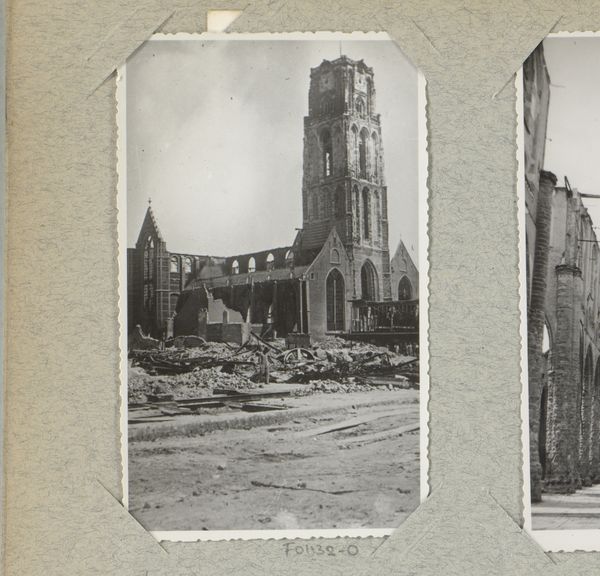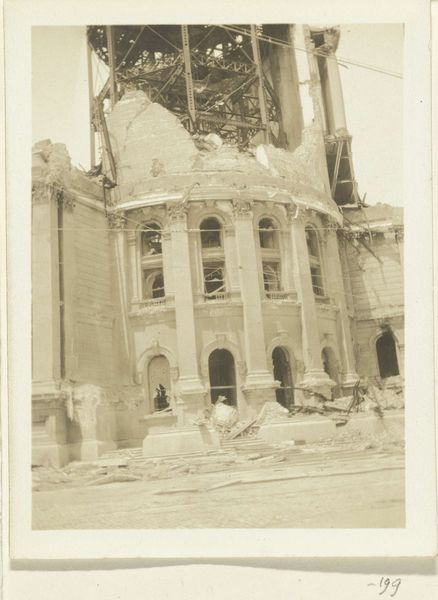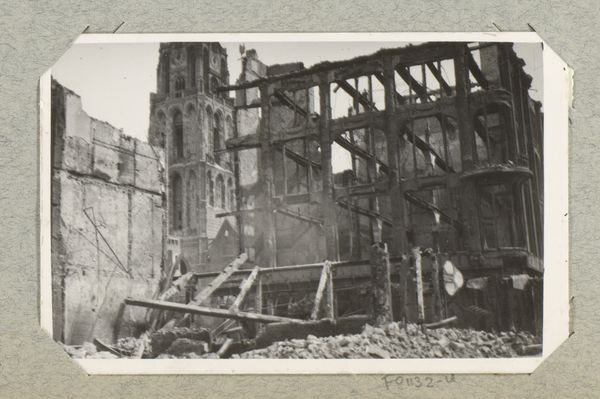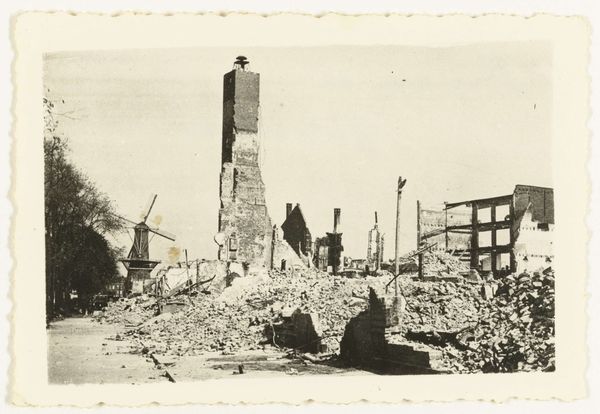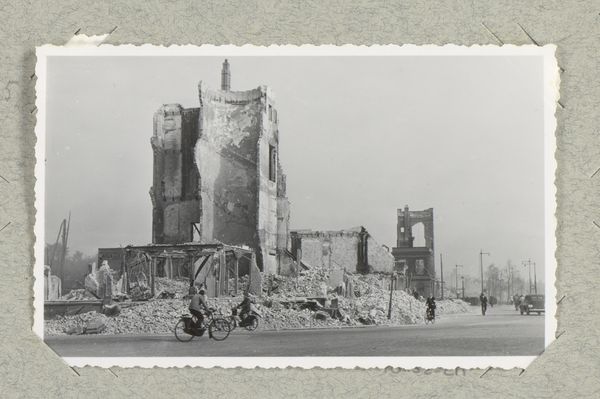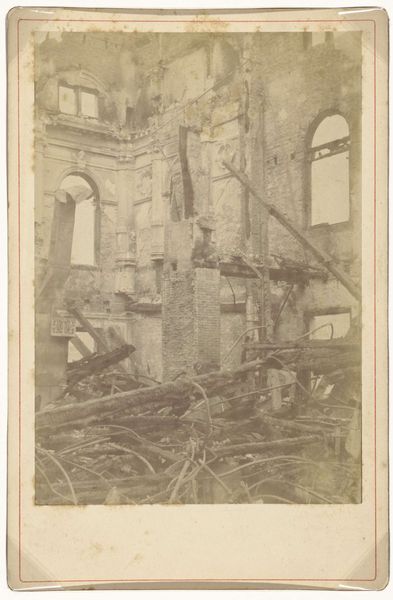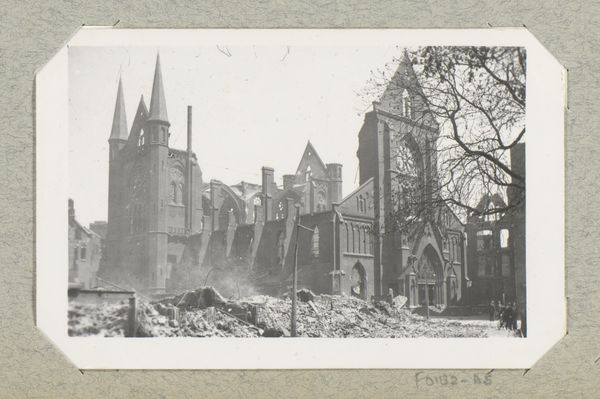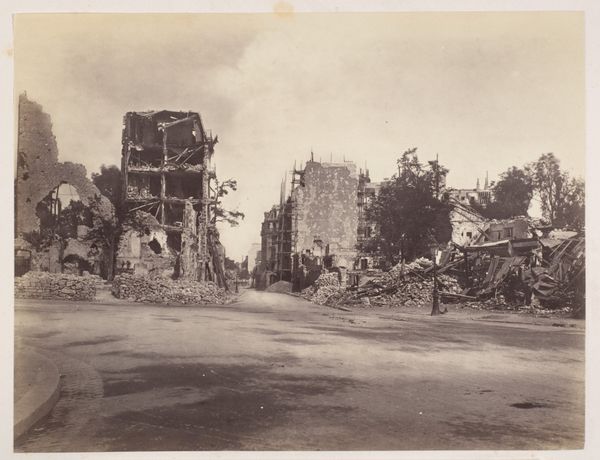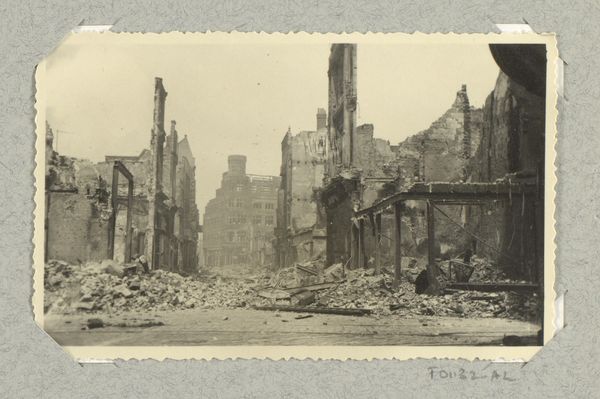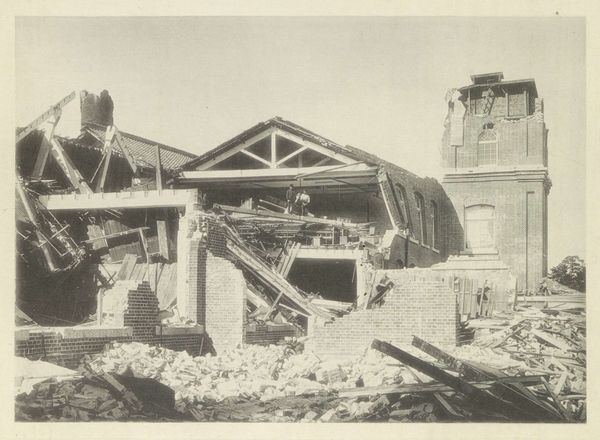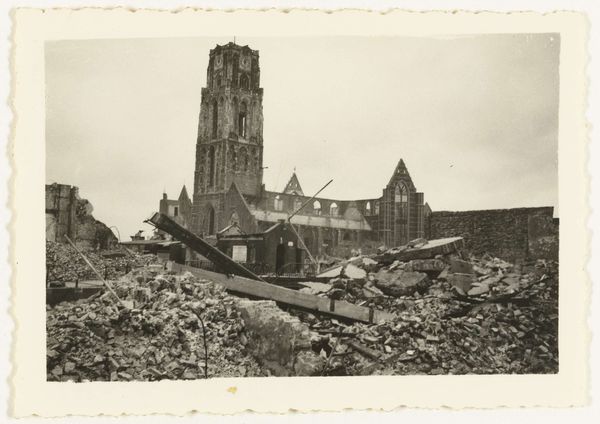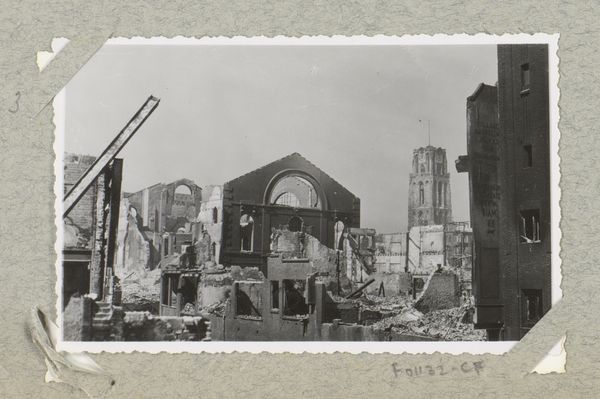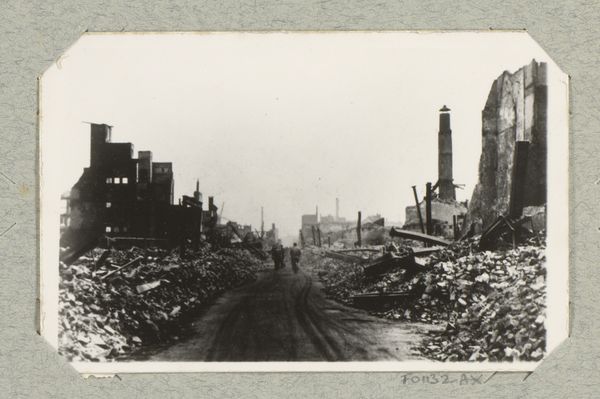
Dimensions: height 12 cm, width 16.8 cm, height 16 cm, width 22.2 cm
Copyright: Rijks Museum: Open Domain
Editor: This photograph, titled "Verwoeste Eusebiuskerk te Arnhem" or "Devastated Eusebius Church in Arnhem", was taken by Anefo between 1945 and 1946. It’s a gelatin silver print that depicts the ruins of a church. It has such a desolate feeling; the architecture is monumental but so broken. What kind of story do you think this image tells? Curator: It speaks volumes about the human cost of conflict, doesn’t it? Here, we’re not just looking at architectural devastation, but the violent disruption of a community’s spiritual and social center. The Eusebius Church would have been a place of gathering, of shared identity. Consider the historical context: the Netherlands suffered terribly during the Second World War. Doesn't this image urge us to think about the intersection of national identity, faith, and the physical realities of war? What does the black and white medium evoke for you? Editor: It amplifies that sense of rawness, and honestly, timelessness. The photo feels immediate, like a fresh wound. The landscape is barren. Are there any hidden figures of resistance implied in the imagery? Curator: The presence of individuals amidst the ruins – are they merely observers, or are they agents of rebuilding and remembrance? How do we interpret their relationship to the destroyed space? It’s critical to remember that history isn't just dates and events; it is human experiences, trauma, and resilience. Editor: So the image works beyond just documenting to acting as a moment of both looking back and urging the society to look forward. Thank you, it's incredible how much history a single photograph can hold. Curator: And how much that history continues to inform our present and shape our future. The act of looking is never neutral.
Comments
No comments
Be the first to comment and join the conversation on the ultimate creative platform.
